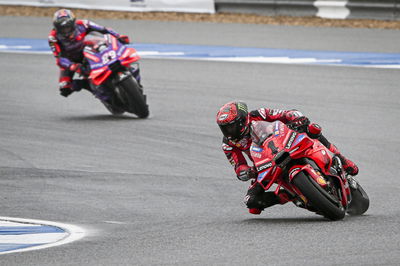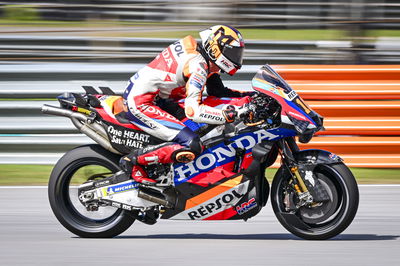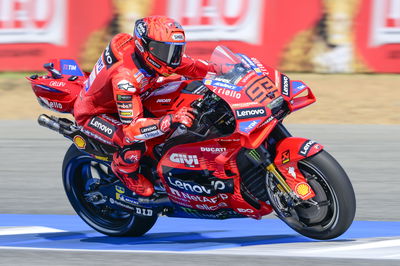The machinery difference in MotoGP’s 2024 title fight
What is different between Jorge Martin and Francesco Bagnaia’s Ducati bikes?

The 2024 MotoGP title will be won by a Ducati rider on a GP24, as Jorge Martin and Francesco Bagnaia head for a final round showdown in Barcelona.
The 2024 season has been a banner year for Ducati, who has put in the most dominant campaign for a manufacturer in the modern era.
So far it has won all but one of the 19 grands prix run so far in 2024, with 15 of those being taken by riders on the GP24.
Jorge Martin vs Pecco Bagnaia - The key stats so far 📊
— Crash MotoGP (@crash_motogp) November 7, 2024
Two incredible seasons from the both of them 👏#MotoGP pic.twitter.com/YAM83Al2MN
It has won all championships so far, too, with the riders’ title for a third year in a row also going to the Italian brand.
Martin and Bagnaia are split by 24 points going into next weekend’s finale, with the latter having won 10 grands prix to his Pramac rival’s three.
Ducati has maintained equal support for both riders in 2024, even ending development of the GP24 in the second half of the campaign to ensure a level plating field for the championship decider.
But there are subtle differences to the machinery of both riders.
“Personal preference, if you look quickly you can see Pecco Bagnaia prefers the older fork,” TNT Sport’s Michael Laverty analysed in Malaysia.
“It’s got a shorter stroke, and he shows a lot less tube out the top.
“Jorge Martin maybe has 45mm on show, so that’s personal preference in terms of even geometry, the rider height.
“If you look at the aero body, it is identical. There are two versions, but both Pecco and Jorge choose the similar one with the downwash ducts because they work.
“Engine are identical. ECU, we know from the championship side it’s the same for every team up and down this pitlane.”
Bagnaia said at Sepang last weekend that he went back to the older front forks from Friday at the Spanish GP and hasn’t changed his bike since.
The biggest difference between the pair, as Laverty points out, is the engineering support within the factory and Pramac boxes.
“The main difference comes when the engineers plug in [to the bike],” he added.
“So the data that is collected off the MotoGP machines, when you have a look around there is a potentiometer on every single component.
“If you pull a lever: clutch brake. If you pull the brake lever, that data is recorded.
“There are so many channels. They can actually create their own channels, so when you get an inertia platform that has a fast lean angle, for example, the engine spins up a little bit quick, you can cross-reference those channels and then that’s when the engineer comes into play.
“If you look in the back of the garage here at the flyaway races, you can see 10, 20 Ducati engineers, versus the independent team, who still has some quality engineers in there, but not the same level of support. And that’s where the difference is made - the number crunching.”












